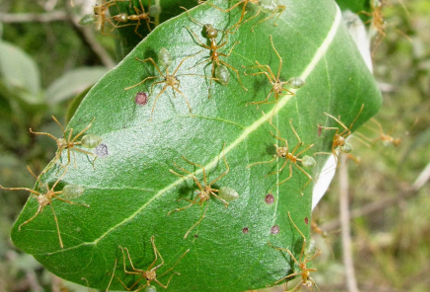
Here I’m crossing Waterview Creek on Jourama Falls Track (©Vilis Nams)
With the sky a mix of sun and cloud above us on this ANZAC Day, Vilis and I headed north from Townsville along the Queensland coast. When discussing possible excursions for the weekend, Vilis had told me, “I want to sit in the middle of the rainforest and listen.” Thus, our destination was Paluma Range National Park, where we would spend the remainder of the ANZAC holiday long weekend.
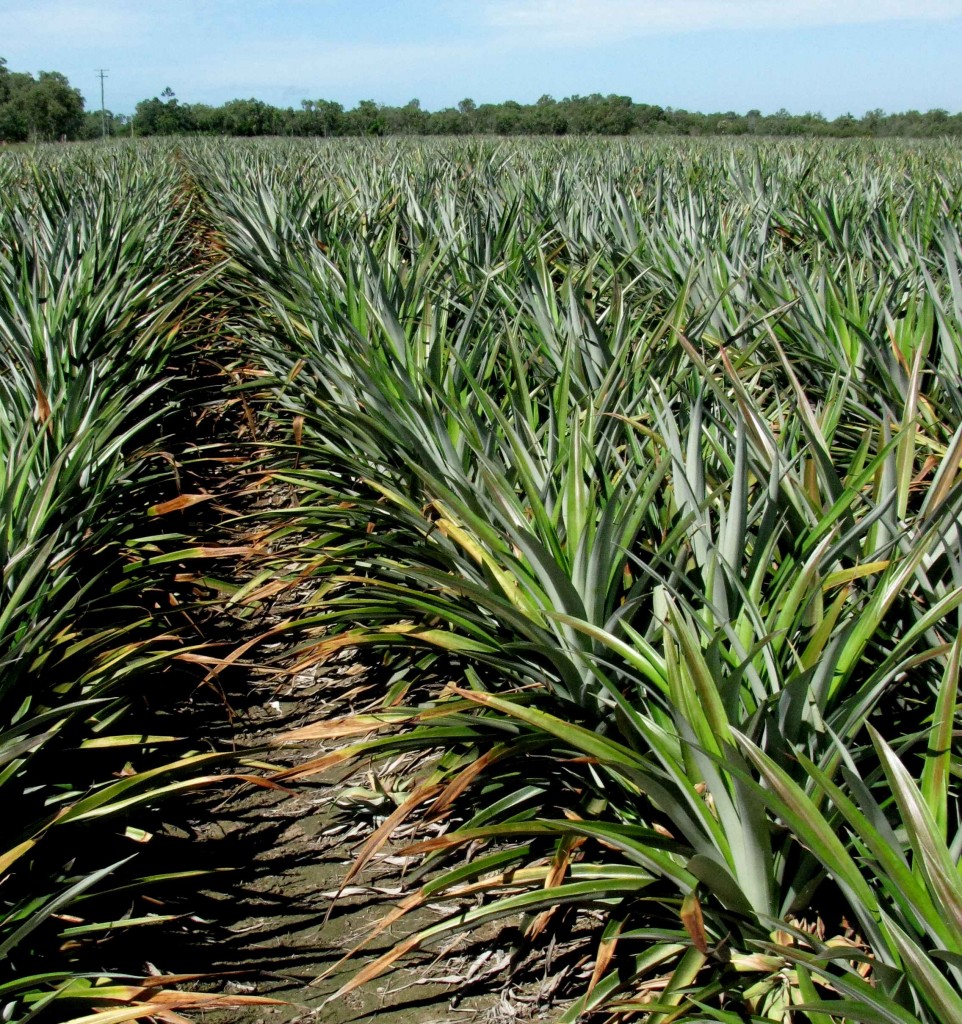
Pineapple Plantation near Balgal Beach (©Vilis Nams)
The sparsely-treed savannah woodland north of Townsville still appeared lush, although autumn yellow tinged its groundcover of grasses. To the west, the Paluma Range of forested hills rose darkly, and as we neared the national park, the hills pressed closer to the highway, backing pineapple fields having neat rows of blue-green, spiky-leaved plants. We also noticed pineapple fields on the ocean side of the highway near Balgal Beach.
Continuing north, we drove past the community of Crystal Creek and into sugarcane country. Dense fields of tall cane resembled orderly jungles tucked near the base of the park’s densely-forested hills. They spread in neat blocks over the plain between the Paluma Range and the ocean. Recently, Vilis was told at JCU that harvest time for sugarcane is late June. When he relayed that information to me, I suggested we tour a sugarcane processing plant during the harvest, to which he agreed. So, watch for an upcoming post on the cane harvest in a couple of months.
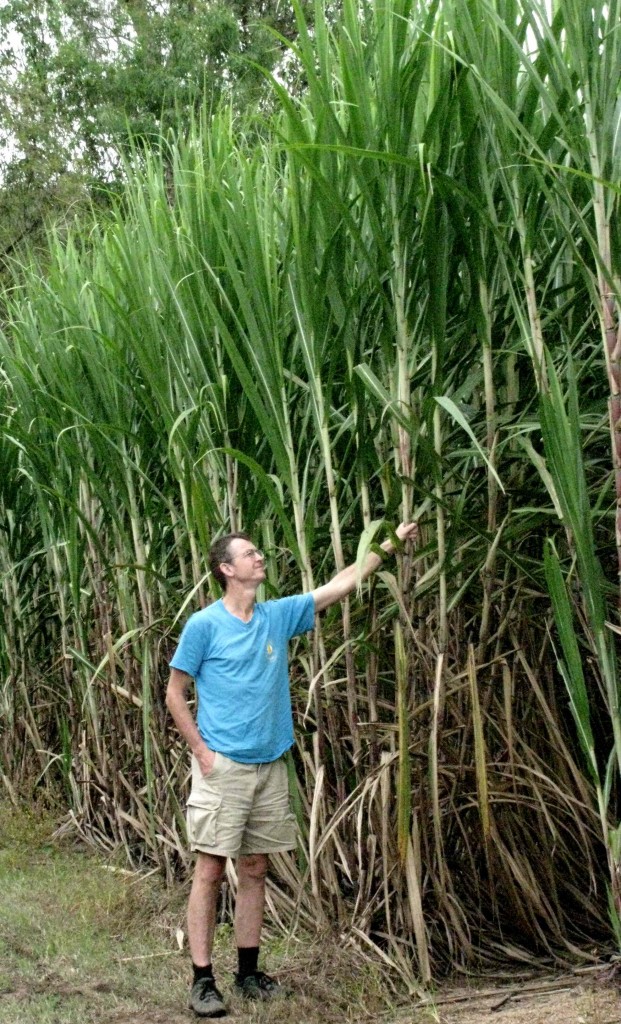
Vilis and Sugarcane Plantation near Crystal Creek (© Magi Nams)
As we drove by cane fields, a smoky blue dollarbird flew across the road, and a pheasant coucal, with its gold-flecked plumage and long tail, flew up from next to a cane field and into nearby trees. Eucalypts growing next to blocks of cane fields or along the roadsides flaunted thick clusters of pale yellow blossoms or scattered red flowers. Whereas I once would have noted only the attractiveness of the gum flowers and perhaps mused about their pollination, I now saw them as a source of food for nectar-feeding bats and other mammals, birds, and insects.
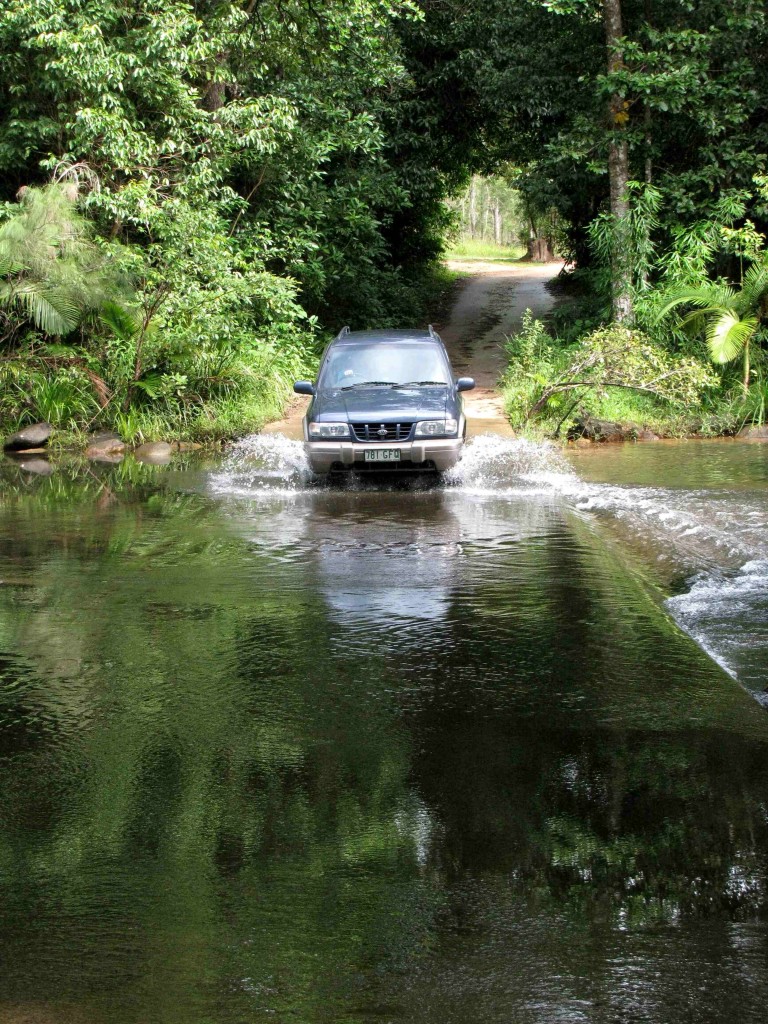
Ford on Jourama Falls Access Road, Paluma Range Nationa Park (©Magi Nams)
We took the Jourama Falls turn-off for Paluma Range National Park and drove through open savannah woodland peppered with cycads and boulders. The narrow access road roughly paralleled Waterview Creek and had signs warning of road closures during flood conditions. The reason for the closures became obvious when the gravel road twice dipped sharply down to concrete fords leading across the creek. Shallow water streamed over the fords, and flood debris was caught high in shrubs bordering the waterway. White, high-water markers labelled with flood depths of up to 6 metres were spaced along the roadside adjacent to the second ford.
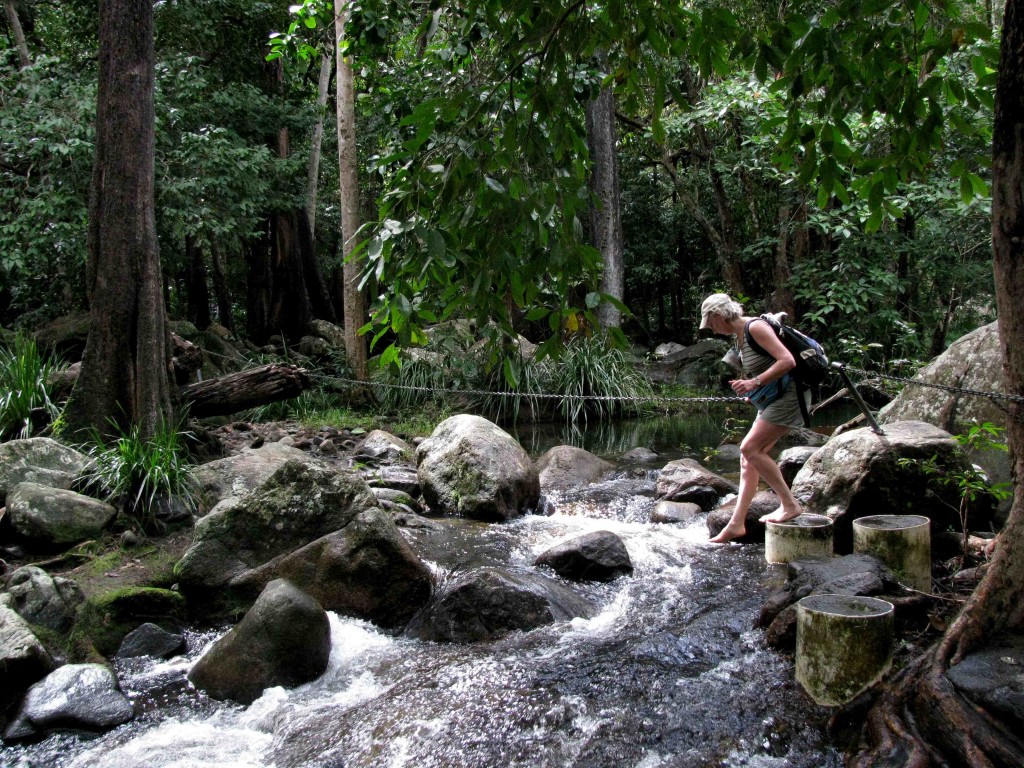
Here I’m crossing Waterview Creek (©Vilis Nams)
At the end of the access road, we parked the Kia and hiked off through open woodland, making a detour to check out Waterview Creek, and later crossing the rainforest-bordered stream with the aid of a chain and cement tube stepping stones interspersed among the rocks and massive pink granite boulders.
On the far side of the creek’s green, slightly milky waters, we explored Rockpools – a section of the creek where enormous, broken slabs of granite angled down to rushing water tumbling over slanted rock faces and into deep green pools. We could see, in the distance, the top of Jourama Falls spilling over a high, sheer face of pink granite encrusted with black lichens. Stepping carefully on the angled, wet granite at Rockpools, we traversed the rock slabs, pausing while I photographed a blue triangle – a gorgeous turquoise and black butterfly – that repeatedly landed on the moist rock to drink.

Blue Triangle on Wet Rock (©Magi Nams)
Farther on, Vilis noted a green tree ant nest in a stunted tree and moved closer to photograph it, only to yelp with pain when ants constructing a new nest he hadn’t noticed crawled all over his pack and shirt and onto his face and neck. They inflicted several bites before we were able to brush them off, and swarmed over the nests, tree branches, tree trunk, and even the ground. Having before seen only old, brown, dried nests, it was fascinating to observe the new nests with their bright green leaves and white ‘glue’ holding the leafy wall-panels in position.
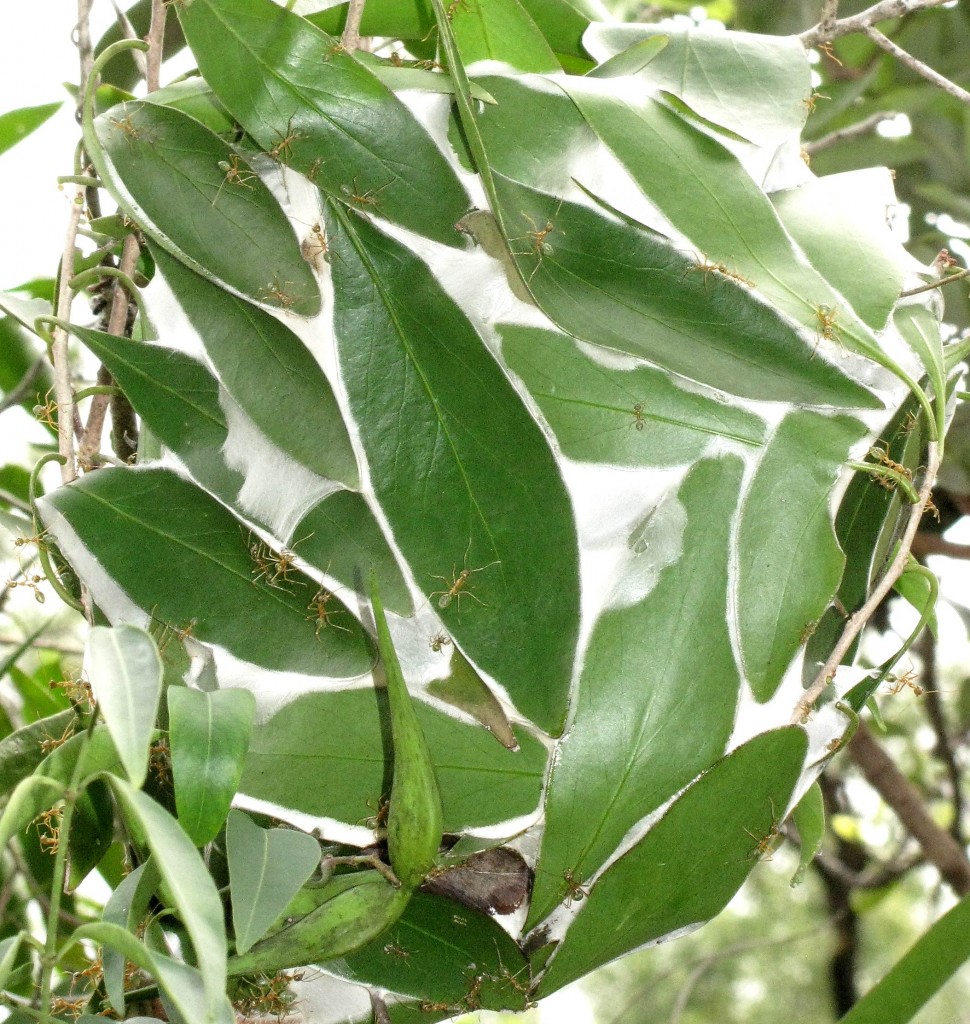
Green Tree Ant Nest (©Vilis Nams)
After our encounter with the tree ants, we bushwhacked straight up the steep hillside through thick, tall grass and over loose rock until we re-joined the track. A short distance father along, a lookout platform on a rock outcrop high above Waterview Creek offered us a spectacular view of Jourama Falls. The falls’ half-dozen cascades of lacy, white water poured over blocks of pink, lichen-stained granite into deep, slate-green, triangular pools caught on rocky ledges. Small copses of trees filled nooks and crevices, and shrubs draped dangling branches over plunging cliffs.
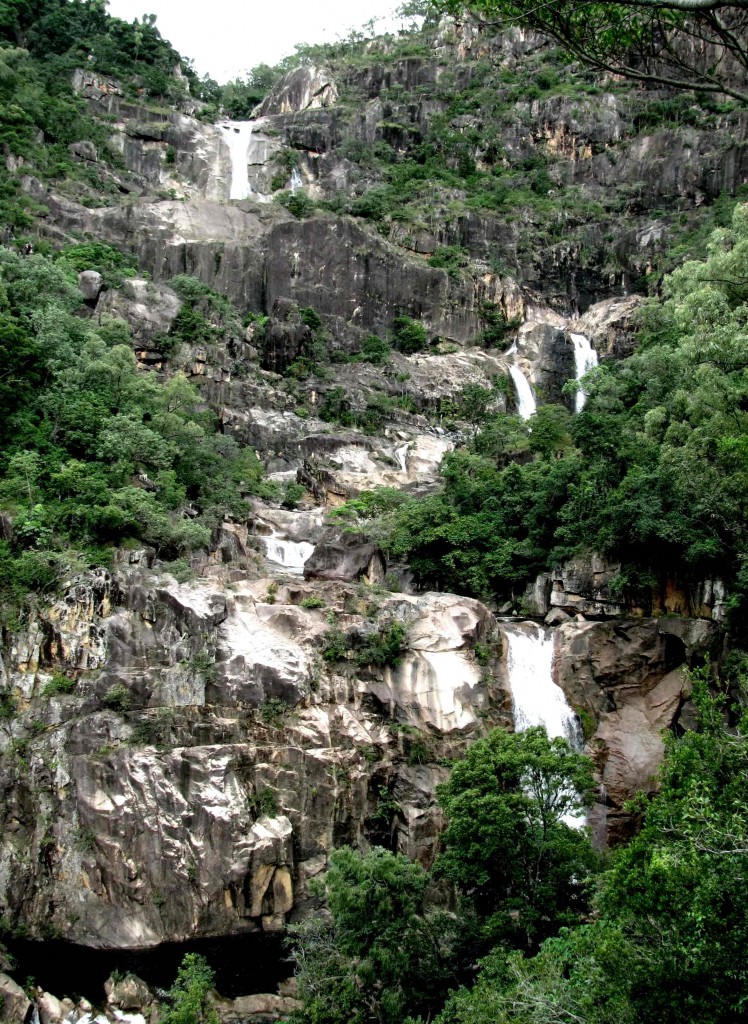
Jourama Falls, Paluma Range National Park (© Vilis Nams)
Leaving the lookout, we descended a series of steps and switchbacks – a much gentler path than the ‘straight-up-we-go’ course we’d climbed from the rock slabs to the track– and hiked out to the Kia. We retraced our route along the Bruce Highway until we intersected with Barrett Road, which offers two access points to Paluma Range National Park. Playing the role of camera-clicking tourists, we checked out three of the park’s water attractions – Paradise Waterhole, an obviously popular campground with a natural swimming pool on Crystal Creek; Rockslides, a collection of deep pools and water-smoothed rock chutes that appeared to be Queensland’s answer to North America’s fascination with indoor water slides; and the swimming holes beneath the bridge over Little Crystal Creek.
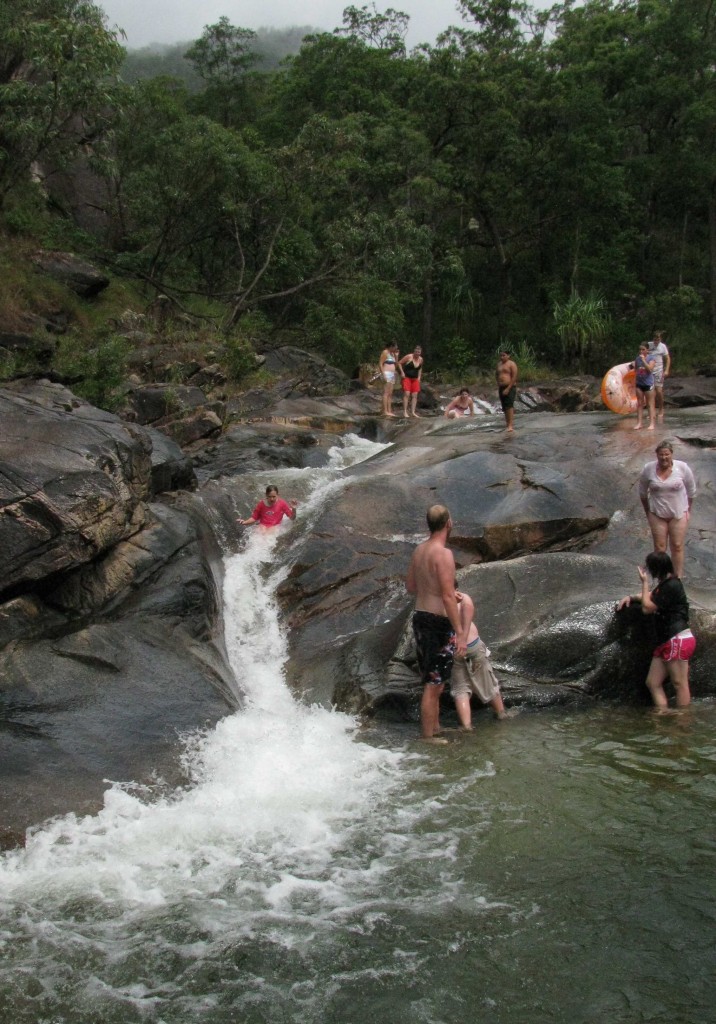
Rockslides (© Vilis Nams)
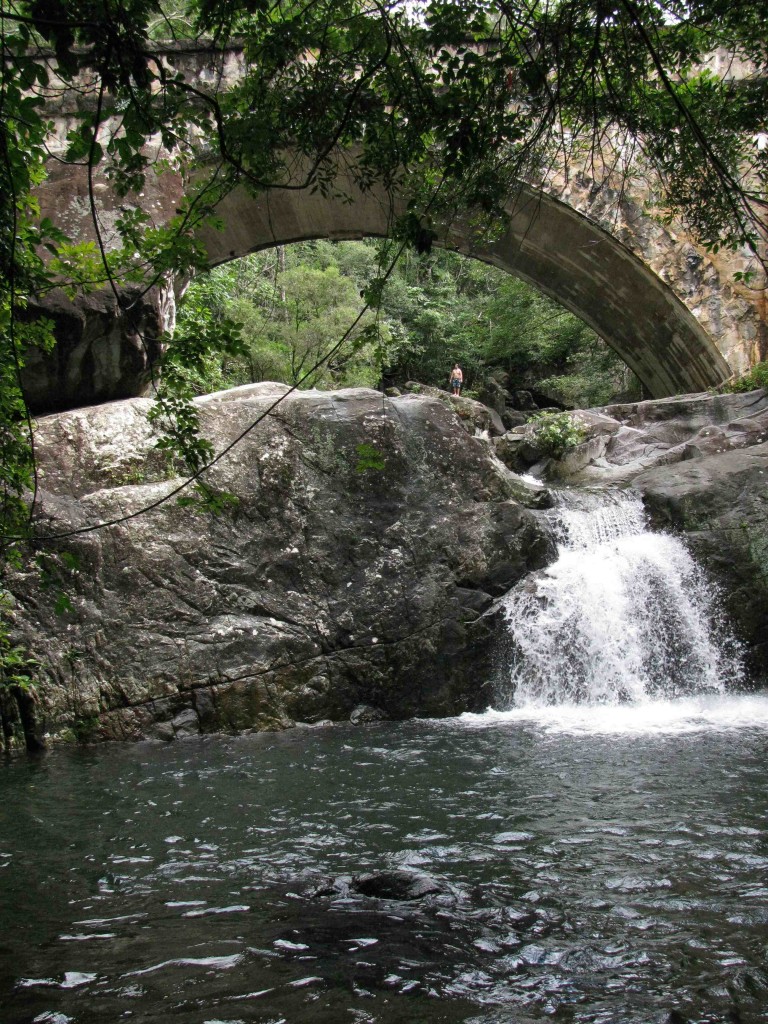
Bridge over Little Crystal Creek (© Vilis Nams)
While we drove the last dozen kilometres to Paluma, the twisting Mount Spec Road – a slithering snake of pavement with severe kinks in its spine – climbed into cloud-shrouded rainforest, the fog obliterating dramatic views of steep mountain slopes plunging to a narrow valley. In the mountain village, we checked into our self-contained unit at the Paluma Dreaming motel and cafe, and then, at last hiked into the rainforest.
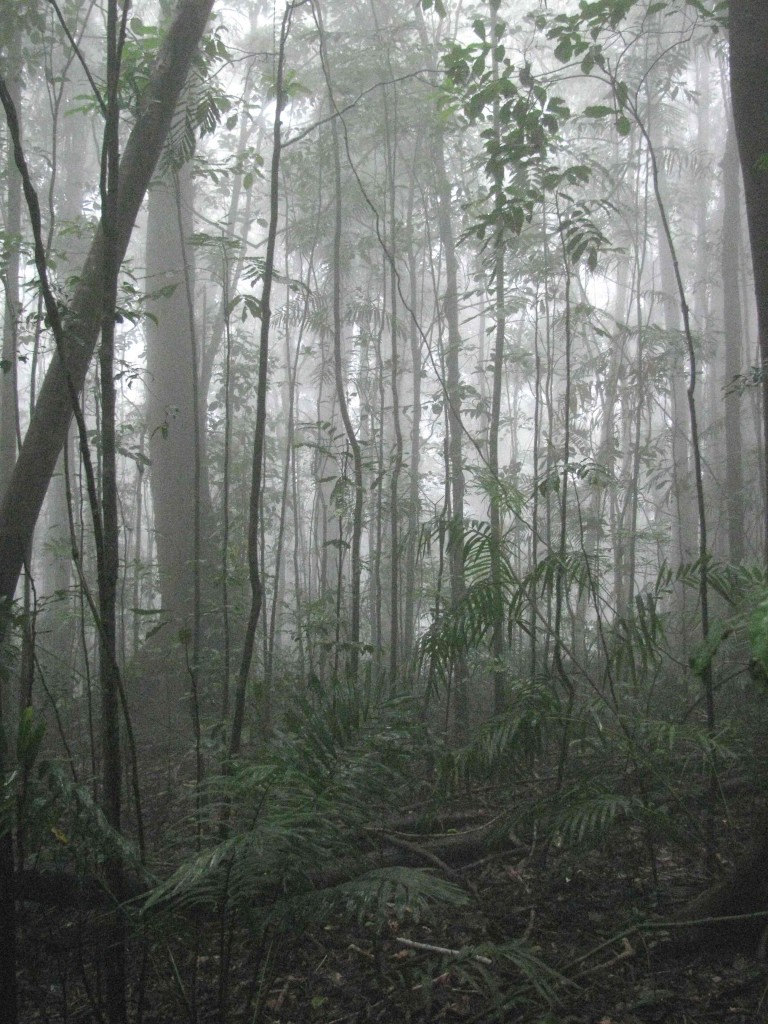
Paluma Rainforest (©Vilis Nams)
At 3:20 p.m., the low light level in the cloud-misted forest cast background trees and vines as near silhouettes. We could hear rain falling onto the rainforest canopy, but few of the drops penetrated to ground level. Most of the rain was intercepted by the leafy canopies of scattered rainforest giants with widely-buttressed trunks and by a dense, mid-forest layer of spindly, big-leafed young trees reaching for the light. Ferns and low-growing palms with flaring leaves created an open, low forest layer, and vines snaked everywhere – spiraling, looping, twisting, entangling trees, climbing through the forest layers.
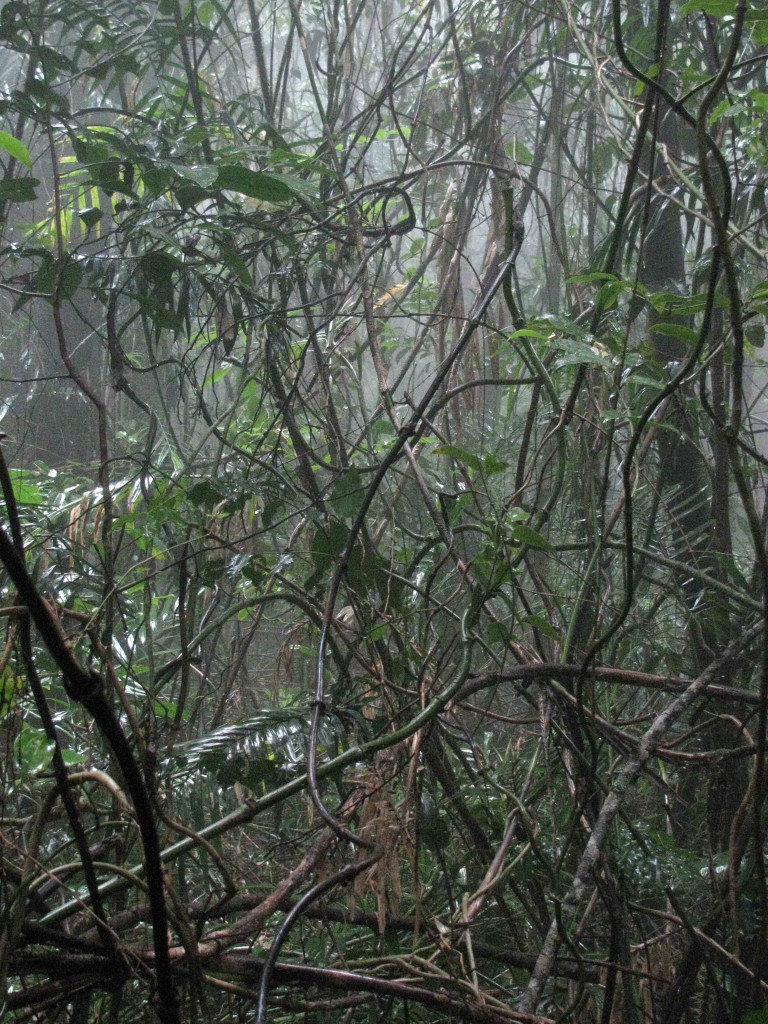
Paluma Rainforest Vines (©Vilis Nams)
The forest was quiet, far quieter than on either of our previous visits. A still, steamy atmosphere pervaded it. Although we heard few insects and birds, the plant growth, with its rain-slick leaves, was so tangled and vivid, looming against the misty sky, that it appeared richer than merely vegetation and in possession of an almost animal quality of dynamism.
We hiked to Witt’s Lookout, from which we spied nothing beyond the dim shapes of trees and a couple of shadowy honeyeaters feeding on banksia blossoms near the platform. Drizzle, or perhaps thickened mist, flecked our clothing with moisture and glistened from every plant surface.
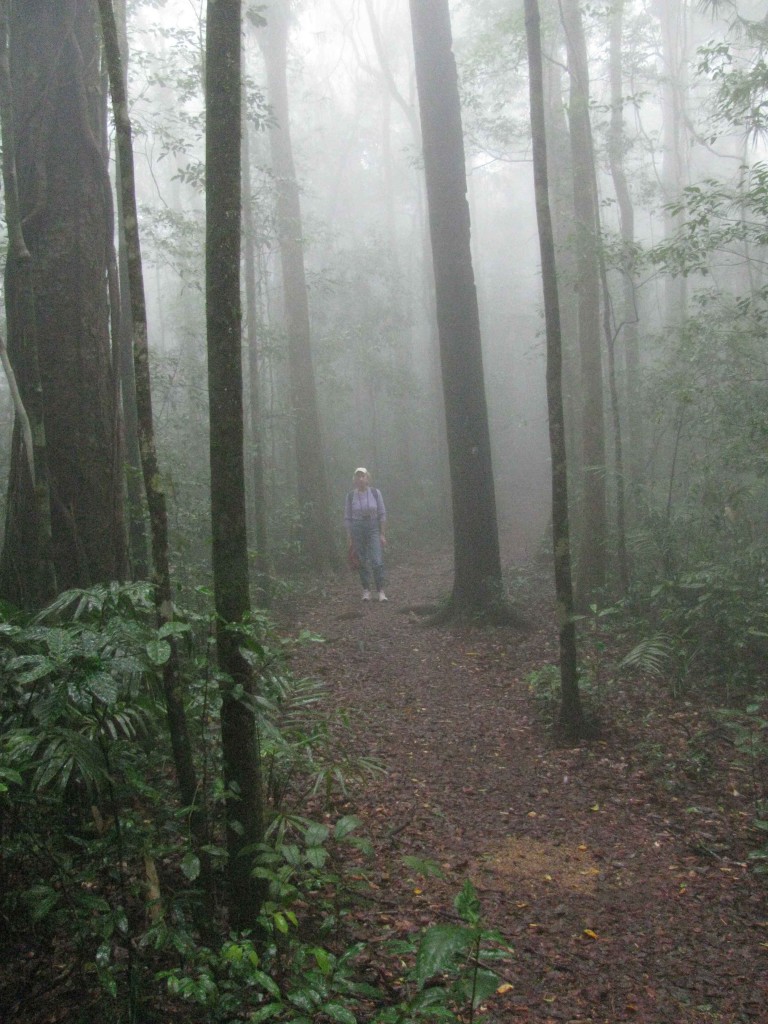
This is Cloudy Creek Track in the Paluma Rainforest (©Vilis Nams)
Leaving the lookout, we followed the track toward Cloudy Creek, the trail disappearing into the mist a short distance ahead of us. We found logs to sit on, and simply listened and looked into that mist, absorbing some of the essence of the rainforest.
For two hours, we strolled through the rainforest – no brisk striding today – and for much of that time, I felt as though I was an insect on the skin of a vast, moisture-breathing entity frought with silent, looming power that, in the case of the vines, appeared insidious. Yet that forest had no protection against humans until humans protected it from themselves.
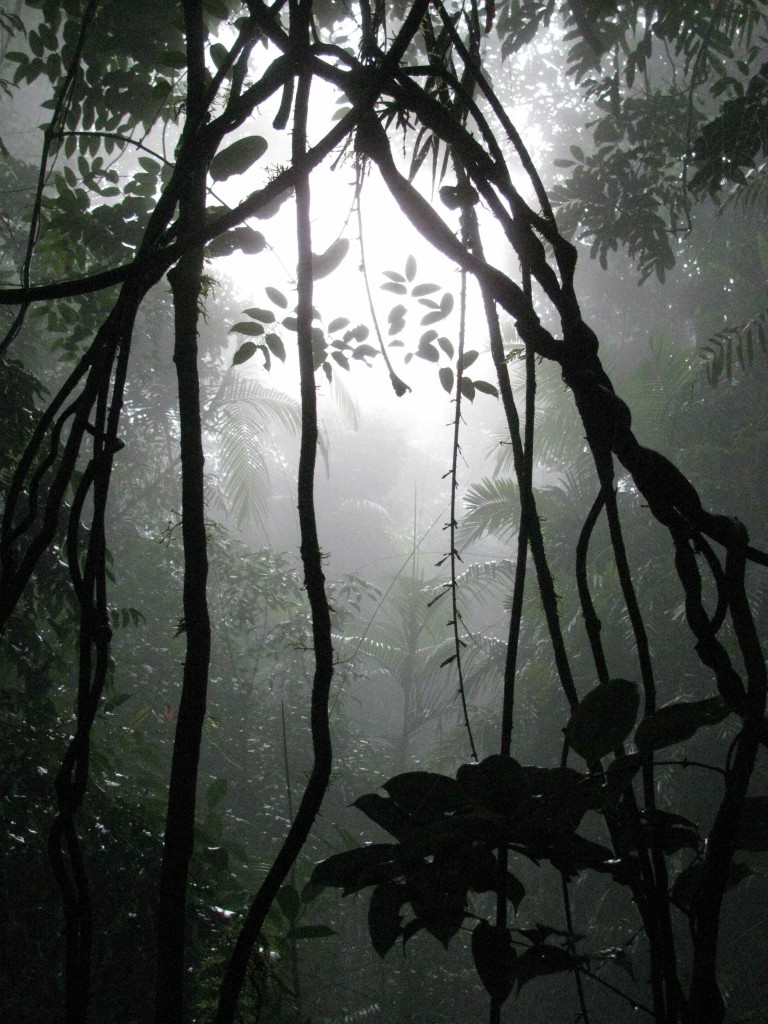
Misty Paluma Rainforest (©Vilis Nams)
After supper, we sought more of the rainforest’s denizens and character, following a guiding rope through the darkness on the Sensory Track, beside which pieces of bark and rotting wood glowed with phosphorescence. Then, with flashlights on, we explored the Rainforest Track and H-Track, two other short tracks that formed looping pathways into the forest from Paluma’s main road. Two brown bats flew erratically across a path, and we heard, while sitting quietly on a bench beside the trail, a couple of ‘falling bomb’ whistles issued by a lesser sooty owl somewhere in the distance. As we walked the village streets back to Paluma Dreaming, we noted that the mist had lifted and left in its place a rich, dark blue sky-bowl above the rainforest.

